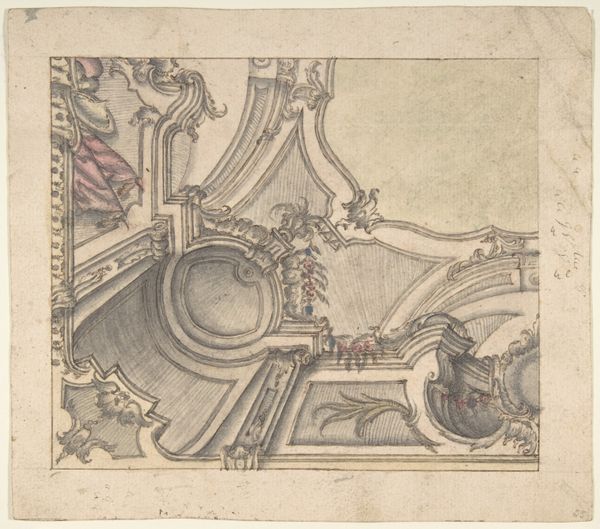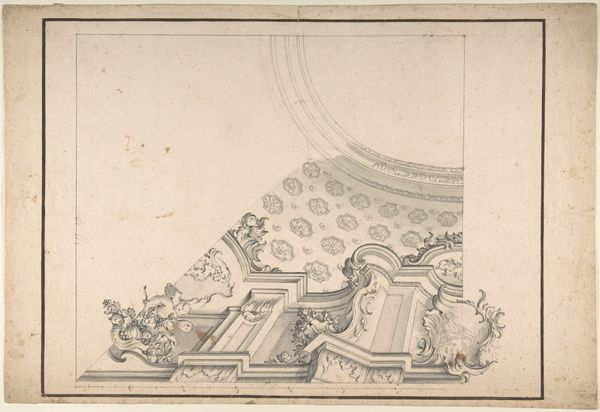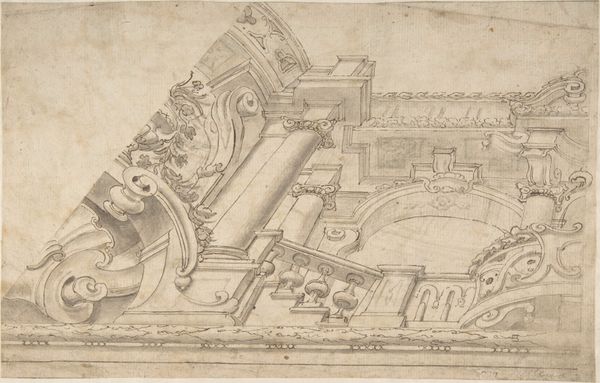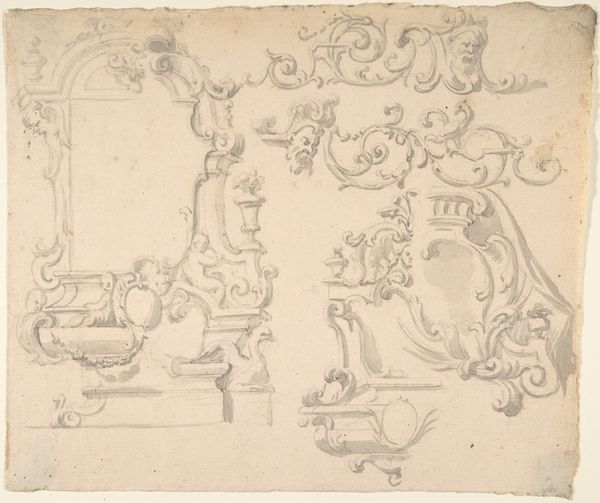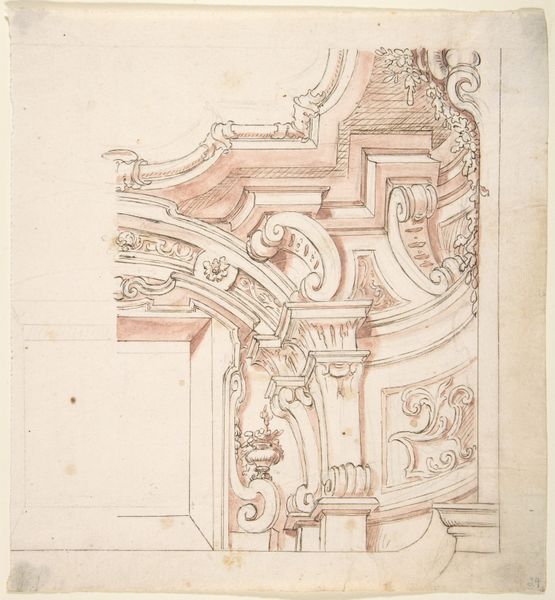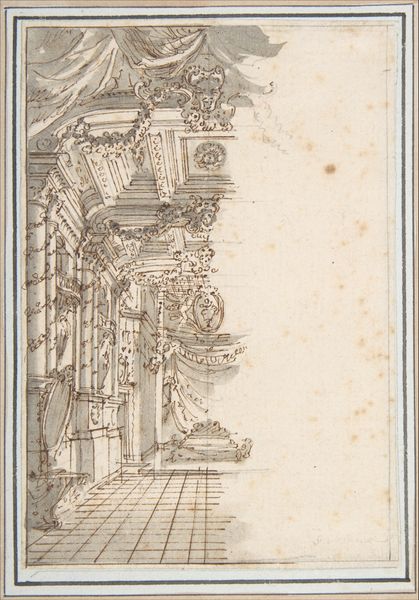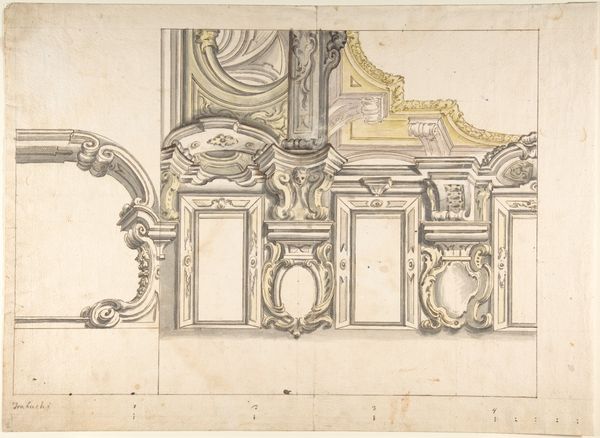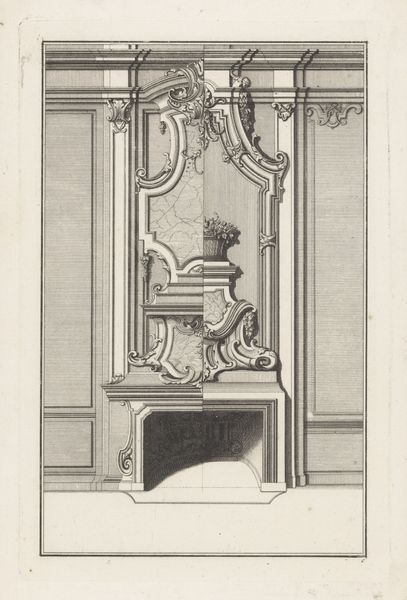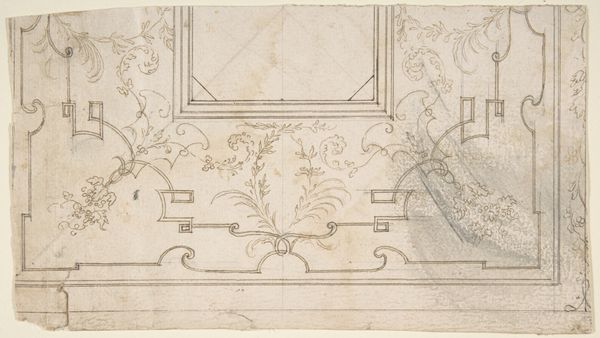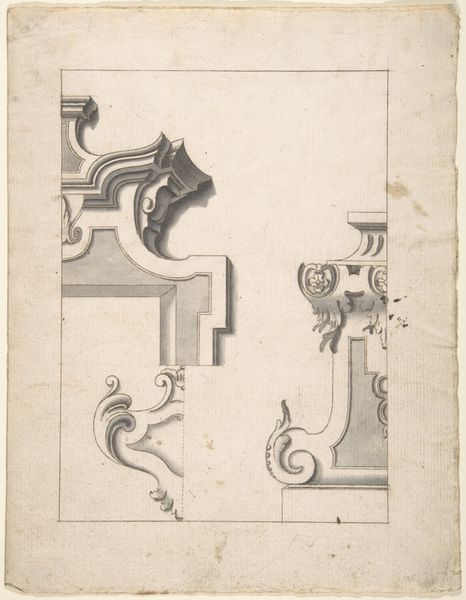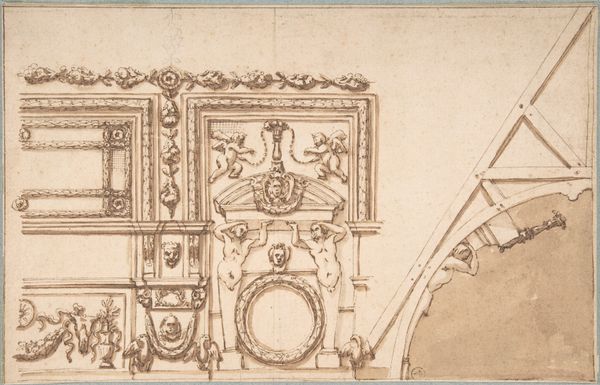
drawing, print
#
architectural sketch
#
drawing
#
aged paper
#
toned paper
#
ink paper printed
# print
#
etching
#
tea stained
#
personal sketchbook
#
pen-ink sketch
#
pen work
#
watercolor
Dimensions: 11 3/8 x 17 7/16 in. (28.9 x 44.3 cm)
Copyright: Public Domain
Curator: Here we have a fascinating drawing titled "Design for One Quarter of a Ceiling." It’s attributed to an anonymous artist, dating from sometime between 1700 and 1780, and it's now held at the Metropolitan Museum of Art. It appears to be executed in ink, watercolor and etching on toned paper. Editor: It’s remarkably detailed. My eye is immediately drawn to the ornate, almost theatrical quality of the ceiling design. It feels heavy with symbolism, dripping with… power, I suppose? The blank space really amplifies it. Curator: The design reflects a period of great ambition in architecture and interior design, when the aristocracy wielded substantial power. These grand ceilings, often found in palaces and churches, were a potent symbol of wealth, taste and dominance. Think about the message conveyed by having such elaborate art literally looking down upon you. Editor: Absolutely. All those scrolls and foliage motifs evoke a sense of fertility, abundance... Even looking at it now, I'm subconsciously thinking of lineage and legacy. This wouldn't have just been about decoration, but about reinforcing cultural narratives. Does the style relate to a particular artistic or social movement of the time? Curator: Stylistically, it aligns with late Baroque transitioning into the Rococo period, styles that were favored by elite patrons looking to make a statement. These movements were often instrumental in reinforcing existing power structures through cultural output. Editor: You can see how easily those flourishes could convey messages of grandeur and authority. It also makes me wonder about the spaces these designs ultimately adorned, and whether the intent was understood—or perhaps misunderstood—by those viewing it at the time. Curator: That tension is exactly where this kind of study becomes meaningful. How effective were these displays of opulence and influence? Did they truly reinforce social hierarchies, or did they inadvertently fuel resentment? Editor: Well, I've certainly developed a healthy respect for ceilings after that discussion! Thank you for providing your valuable insight into it. Curator: Likewise, your focus on the imagery has shown me how these designs worked to establish meaning and, in a way, manipulate perception. Thank you.
Comments
No comments
Be the first to comment and join the conversation on the ultimate creative platform.

